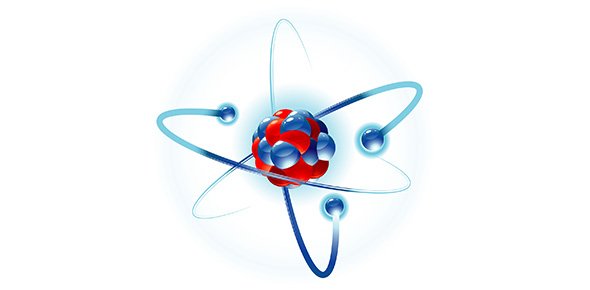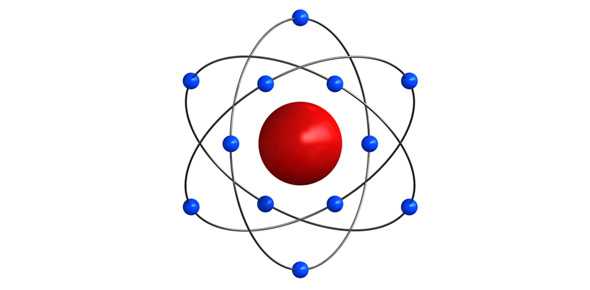Related Flashcards
Related Topics
Cards In This Set
| Front | Back |
|
Which one of the following statements concerning permanent magnets is false?
A) The north pole of a permanent magnet is attracted to a south pole. B) All permanent magnets are surrounded by a magnetic field. C) The direction of a magnetic field is indicated by the north pole of a compass. D) Magnetic field lines outside a permanent magnet originate from the north pole and end on the south pole. E) When a permanent magnet is cut in half, one piece will be a north pole and one piece will be a south pole. |
E) When a permanent magnet is cut in half, one piece will be a north pole and one piece will be
a south pole. |
|
Which combination of units can be used to express the magnetic field?
A) kg m2/C B) kg s/C2 C) N m2/C D) kg/(C s) E) kg m/(C s2) |
D) kg/(C s)
|
|
Which one of the following statements concerning the magnetic force on a charged particle in
a magnetic field is true? A) The magnetic force is a maximum if the particle is stationary. B) The magnetic force is zero if the particle moves perpendicular to the field. C) The magnetic force is a maximum if the particle moves parallel to the field. D) The magnetic force acts in the direction of motion for a positively charged particle. E) The magnetic force depends on the component of the particle's velocity that is perpendicular to the field. |
E) The magnetic force depends on the component of the particle's velocity that is perpendicular
to the field. |
|
Complete the following statement: The magnitude of the magnetic force that acts on a
charged particle in a magnetic field is independent of A) the sign of the charge. B) the magnitude of the charge. C) the magnitude of the magnetic field. D) the direction of motion of the particle. E) the velocity components of the particle. |
A) the sign of the charge.
|
|
5. A charged particle is moving in a uniform, constant magnetic field. Which one of the
following statements concerning the magnetic force exerted on the particle is false? A) The magnetic force does no work on the particle. B) The magnetic force increases the speed of the particle. C) The magnetic force changes the velocity of the particle. D) The magnetic force can act only on a particle in motion. E) The magnetic force does not change the kinetic energy of the particle. |
B) The magnetic force increases the speed of the particle.
|
|
A proton traveling due west in a region that contains only a magnetic field experiences a
vertically upward force (away from the surface of the earth). What is the direction of the magnetic field? A) north B) east C) south D) west E) down |
C) south
|
|
7. A charged particle is launched with a velocity of 5.2 × 104 m/s at an angle of 35° with respect
to a 0.0045-T magnetic field. If the magnetic field exerts a force of 0.0026 N on the particle, determine the magnitude of the charge on the particle. A) 11 µC B) 15 µC C) 19 µC D) 23 µC E) 27 µC |
C) 19 µC
|
|
Which one of the following statements best explains why a constant magnetic field can do no
work on a moving charged particle? A) The magnetic field is conservative. B) The magnetic force is a velocity dependent force. C) The magnetic field is a vector and work is a scalar quantity. D) The magnetic force is always perpendicular to the velocity of the particle. E) The electric field associated with the particle cancels the effect of the magnetic field on the particle. |
D) The magnetic force is always perpendicular to the velocity of the particle.
|
|
An electron traveling due north enters a region that contains a uniform magnetic field that
points due east. In which direction will the electron be deflected? A) east B) west C) up D) down E) south |
D) down
|
|
Two electrons are located in a region of space where the magnetic field is zero. Electron A
is at rest; and electron B is moving westward with a constant velocity. A non-zero magnetic field directed eastward is then applied to the region. In what direction, if any, will each electron be moving after the field is applied? A) Electron A: at rest Electron B: westward B) B) Electron A: northward lectron B: eastward C) C) Electron A: eastward Electron B: westward D) D) Electron A: southward Electron B: downward E) E) Electron A: upward Electron B: westward |
A) Electron A: at rest Electron B: westward
|
|
An electron is moving with a speed of 3.5 × 105 m/s when it encounters a magnetic field of
0.60 T. The direction of the magnetic field makes an angle of 60.0° with respect to the velocity of the electron. What is the magnitude of the magnetic force on the electron? A) 4.9 × 10–13 N B) 3.2 × 10–13 N C) 1.7 × 10–13 N D) 3.4 × 10–14 N E) 2.9 × 10–14 N |
E) 2.9 × 10–14 N
|
|
An electron traveling due south enters a region that contains both a magnetic field and an
electric field. The electric field lines point due west. It is observed that the electron continues to travel in a straight line due south. In which direction must the magnetic field lines point? A) up B) down C) east D) west E) south |
B) down
|
|
An proton travels through a region of space with no acceleration. Which one of the
following statements is the best conclusion? A) Both E and B must be zero in that region. B) E must be zero, but B might be non-zero in that region. C) E and B might both be non-zero, but they must be mutually perpendicular. D) B must be zero, but E might be non-zero in that region. E) E and B might both be non-zero, but they must point in opposite directions. |
C) E and B might both be non-zero, but they must be mutually perpendicular.
|
|
A proton is traveling south as it enters a region that contains a magnetic field. The proton is deflected downward toward the earth. What is the direction of the magnetic field? A) downward, toward the earth B) west C) north D) east E) south |
B) west
|
|
A particle with a mass of 6.64 × 10–27 kg and a charge of +3.20 × 10–19 C is accelerated from
rest through a potential difference of 2.45 × 106 V. The particle then enters a uniform 1.60-T magnetic field. If the particle's velocity is perpendicular to the magnetic field at all times, what is the magnitude of the magnetic force exerted on the particle? A) zero newtons B) 1.14 × 10–10 N C) 6.55 × 10–10 N D) 4.09 × 10–11 N E) 7.87 × 10–12 N |
E) 7.87 × 10–12 N
|





